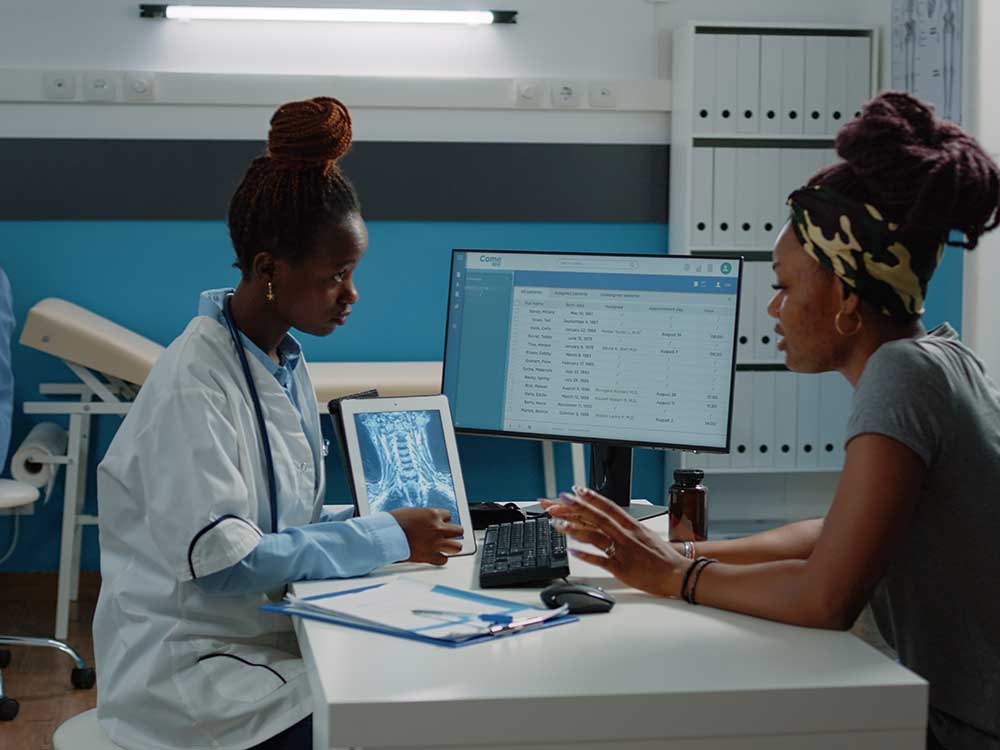Finest Practices in Medical Management for Improving Effectiveness and Lowering Expenses
In the ever-evolving landscape of medical care, the quest of ideal practices in medical management is critical for enhancing effectiveness and suppressing expenses. By integrating innovative modern technologies such as electronic wellness records and telemedicine, doctor can enhance operations and boost patient treatment. Modern technology alone is not a remedy; enhancing resource allocation and fostering collaborative communication amongst treatment teams are equally critical. As organizations aim to balance quality and price, what techniques should be prioritized to achieve these double objectives? The solution to these concerns hold the key to a more sustainable healthcare system.
Leveraging Advanced Technology
In today's swiftly developing healthcare landscape, leveraging innovative innovation is no much longer optional however necessary for reliable medical administration. The integration of digital remedies into medical care systems has changed the way centers operate, streamlining procedures and boosting person care. Electronic Health And Wellness Records (EHRs) are pivotal, supplying detailed person information that can be accessed promptly by accredited employees, therefore minimizing redundancy and lessening mistakes. By centralizing patient details, EHRs get rid of the need for cumbersome paperwork and facilitate seamless communication amongst healthcare providers.
Telemedicine is one more technological improvement that has actually reinvented person interaction. It uses ease for both clients and healthcare professionals by making it possible for remote assessments, which can lower the demand for in-person gos to and enhance consultation scheduling. In addition, telehealth systems can extend health care access to country or underserved locations, connecting gaps in care delivery.
Furthermore, making use of Expert system (AI) and equipment knowing is ending up being increasingly widespread in anticipating analytics, permitting for early discovery of potential wellness concerns and more enlightened decision-making. These technologies, when integrated efficiently, can boost analysis accuracy and individualize client treatment plans, ultimately causing enhanced health care results and functional performance.
Optimizing Source Allowance
By strategically handling resources such as workers, devices, and financial resources, healthcare centers can substantially boost their functional efficiency, improve patient outcomes, and lower unnecessary expenditures. The very first step in maximizing resource allocation includes carrying out a thorough assessment of present properties and recognizing locations where resources may be underutilized or exhausted.
Prioritizing source allowance based on patient demands and service needs is essential. Implementing flexible staffing models can additionally optimize labor sources by readjusting employees allocation in reaction to rising and fall patient volumes.
Funds must be meticulously kept track of and allocated with critical foresight to support both short-term operational needs and lasting institutional goals. This consists of investing in training programs that boost staff competencies and taking on energy-efficient practices that decrease functional prices (medical administration). Eventually, an optimized resource allocation method promotes a lasting medical care setting that is receptive, reliable, and monetarily sensible
Streamlining Operations Processes
When healthcare facilities objective to boost functional effectiveness, simplifying workflow processes comes to be a look at this website critical emphasis. Efficient process reduce redundancy, remove unneeded actions, and boost coordination among medical care professionals. This strategy not only accelerates service distribution but also improves the high quality of individual treatment.

Next, technology combination plays a substantial duty in improving workflows. Carrying out electronic health and wellness records (EHRs) and electronic medical professional order entry (CPOE) systems reduces paperwork, decreases human error, and ensures information is obtainable to all relevant workers. In addition, leveraging telemedicine systems can simplify individual appointments and follow-ups, lowering the pressure on physical infrastructure.

Inevitably, streamlined workflows cause cost decreases and boosted client fulfillment, cultivating an extra sustainable healthcare setting.
Enhancing Information Management
Structure upon structured process, enhancing information administration becomes an essential part beforehand health care administration. Effective data weblink monitoring systems are important for maintaining accurate individual documents, boosting decision-making, and making sure compliance with regulative requirements. By executing durable information administration services, medical care centers can boost the high quality of individual care while simultaneously reducing functional prices.
One secret facet of improving data administration is the combination of innovative electronic health and wellness document (EHR) systems. These systems promote the smooth exchange of patient details throughout various divisions, decreasing replication of tests and lessening errors. A well-designed EHR system sustains information analytics, enabling healthcare providers to recognize patterns and make notified choices concerning individual treatment.
Moreover, guarding client data is extremely important. Embracing comprehensive cybersecurity measures, consisting of security and normal audits, ensures the integrity and discretion of delicate information. This not only shields people however likewise keeps the organization's reputation.
Spending in staff training is one more important variable. Educating health care specialists on information monitoring methods enhances their capacity to effectively make use of technology, leading to enhanced patient end results. To conclude, boosting information administration with sophisticated innovation and thorough training is vital for achieving efficiency and cost decrease in clinical administration.
Fostering Collaborative Communication
A vital component in advancing medical management is promoting collaborative interaction amongst healthcare experts. Effective interaction is vital for making certain smooth individual care, maximizing treatment outcomes, and decreasing errors. By urging open discussion and coordination throughout multidisciplinary groups, medical care companies can boost their operational effectiveness and minimize unnecessary costs.
Central to this approach is the integration of communication modern technologies such as digital wellness records (EHRs) and safe messaging platforms, which assist in the fast exchange of critical person details. These tools make it possible for doctor to accessibility and share information in actual time, ensuring that all employee are informed and aligned in their decision-making processes. Routine group conferences and interdisciplinary rounds can better advertise a culture of partnership and responsibility.
Training programs concentrated on enhancing communication abilities are also crucial. These programs can help staff establish the capacity to communicate information plainly and listen actively, hence reducing misconceptions and cultivating an encouraging workplace. On top of that, embracing standard communication protocols, such as SBAR (Circumstance, History, Evaluation, Suggestion), can streamline the exchange of info, guaranteeing that vital information are communicated succinctly navigate here and effectively. Inevitably, fostering joint interaction leads to improved health care delivery and expense financial savings (medical administration).

Conclusion
Integrating advanced modern technology, such as electronic wellness records and telemedicine, alongside maximized source appropriation and structured process procedures, is vital for improving effectiveness in medical administration. Effective information monitoring and fostering joint communication amongst healthcare teams are crucial for decreasing redundancies and enhancing treatment quality. By prioritizing preventive care and participating in high quality renovation initiatives, medical care companies can achieve significant price savings and boosted patient end results, consequently making sure sustainable health care delivery in a progressively complex setting.